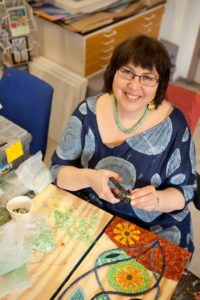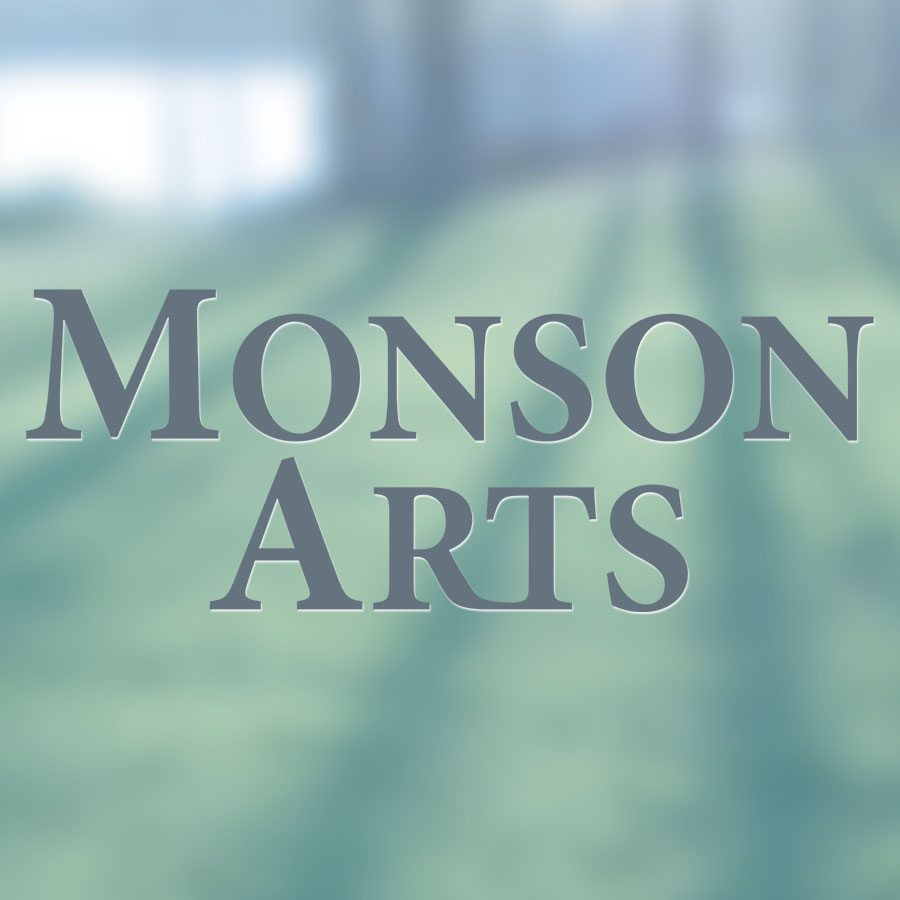
Lisa Houck studied printmaking and graduated at the Rhode Island School of Design and shortly after joined the Experimental Etching Studio in Boston where she taught etching and monoprinting before going on to get an MFA in 1989 from Tufts University in painting. She’s shown extensively throughout New England and her work is in numerous corporate and private collections; she also designed a 22′ long mosaic mural for the Frieda Garcia Park in Boston. Starting June 25th, Lisa will be teaching a week-long mosaic class using unique handmade tiles to work with students to develop their compositions and personal imagery. We recently asked her about the type of material she’s using for this class and what led her to work with it.
Monson Arts: The class you’re leading utilizes Mexican smalti, a type of mosaic that uses handmade tiles that have unusual variations of color and texture. What makes these types of tiles Mexican or a part of Mexican culture and how are they integrated into that culture?
Lisa Houck: Smalti is a specific type of handmade glass tile that has been used for centuries in mosaics. Some of the best smalti is made in Italy and Mexico. I enjoy working with the Mexican smelt because it has a mottled surface that makes it look like someone hand-painted each tile. It’s a very different look than using a commercial tile which is very regular and even. Another great feature of the Mexican smalti is that it is all about the same thickness, so when it is grouted it is safe to touch it-no sharp edges. That was important for me because I was designing mosaics for public parks and I wanted the mosaics to be touchable. The smalti is made by the Perdomo family in Mexico.
MA: Looking at your background, your undergraduate degree was in printmaking and then you focused and/or expanded to etching and monoprinting (printings where each print is unique), eventually teaching classes in those disciplines. Do you see tile mosaics as a continued evolution of your art and we’re you attracted to Mexican smalti because each design is unique or was there something particular about this type of tile mosaic that you found inspiring?
LH: Mosaics were a natural outgrowth of my other work in watercolor, oil on wood painting, printmaking and ceramics. It came about when I was asked to make mosaics for Children’s Hospital in Boston. I worked with mosaic artists at Unicorn Art Studio in New York to create a number of large-scale mosaics, including a 22’ long mosaic for the Frieda Garcia Park in Boston. Since I use a lot of patterning in my work, mosaics were natural for me, because it is created out of patterns. I continued to learn mosaic fabrication skills from taking classes with a number of established mosaic artists, and now I fabricate most of my pieces myself.
MA: What is your favorite part about teaching and what do you hope your students get out of your classes?
LH: I have always enjoyed teaching because it helps me to clarify my own thoughts about design, color, and the process of making art. I also enjoy working with a group because we learn from each other. I particularly like to work with beginners because it is exciting to see the students gain confidence and new skills which they can take home with them to continue creating. Mosaics is a medium that does not require a lot of tools, so students can continue at home working on a variety of projects, indoors or outdoors.
There is still space in Lisa Houck’s class, Personal Imagery in Mosaics, that runs from June 25th through July 1st at Monson Arts. Further details and sign-up are available HERE.

 Time and space to create.
Monson Arts is a new artists’ residency and arts center in Monson, Maine. Programs include residencies for artists and writers, intensive shorter workshops, and educational partnerships with area secondary schools.
Time and space to create.
Monson Arts is a new artists’ residency and arts center in Monson, Maine. Programs include residencies for artists and writers, intensive shorter workshops, and educational partnerships with area secondary schools.